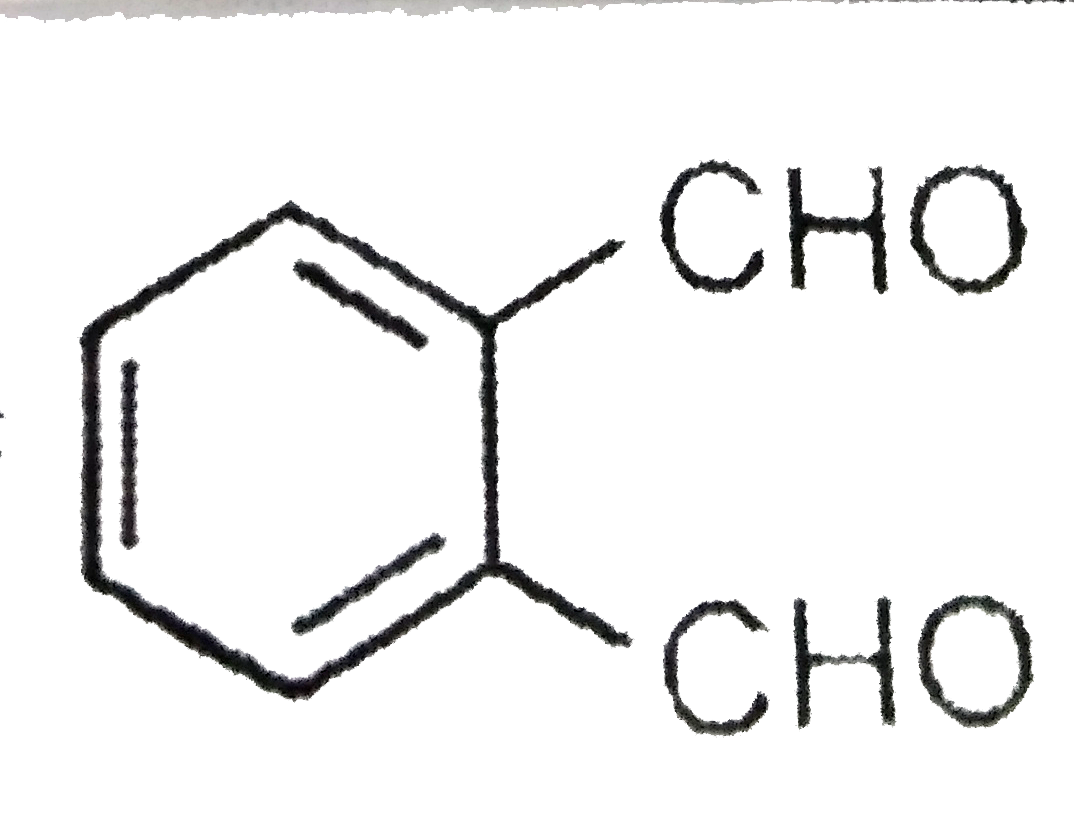Chlorination of toluene in the presence of light and heat followed by treatment with aqueous NaOH gives
To solve the question regarding the chlorination of toluene in the presence of light and heat followed by treatment with aqueous NaOH, we will go through the following steps:
Step 1: Understand the structure of toluene
Toluene is a methyl-substituted benzene, which has the following structure:
CH3∣C6H5
Step 2: Chlorination of toluene
When toluene is chlorinated in the presence of light and heat (a free radical substitution reaction), chlorine (Cl2) will react with the methyl group (-CH3) of toluene. This reaction proceeds through three steps:
1. First Chlorination:
- The first chlorine atom replaces one hydrogen atom from the methyl group, forming chloromethylbenzene (benzyl chloride, C6H5CH2Cl).
C6H5−CH3+Cl2→C6H5−CH2Cl+HCl
2. Second Chlorination:
- The second chlorine atom replaces another hydrogen atom from the methyl group, forming dichloromethylbenzene (C6H5-CHCl2).
C6H5−CH2Cl+Cl2→C6H5−CHCl2+HCl
3. Third Chlorination:
- The third chlorine atom replaces the last hydrogen atom from the methyl group, forming trichloromethylbenzene (C6H5-CCl3).
C6H5−CHCl2+Cl2→C6H5−Cl3+HCl
Step 3: Treatment with aqueous NaOH
Now, when trichloromethylbenzene (C6H5-CCl3) is treated with aqueous NaOH, a hydrolysis reaction occurs. The chlorine atoms are replaced by hydroxyl (OH) groups:
1. Hydrolysis of Trichloromethylbenzene:
- The three chlorine atoms are replaced by three hydroxyl groups, resulting in a compound with three hydroxyl groups attached to the benzene ring.
C6H5−Cl3+3NaOH→C6H5−COOH+3NaCl+3H2O
Step 4: Final product
The final product after the hydrolysis is benzoic acid (C6H5-COOH), as the presence of three hydroxyl groups leads to the formation of the carboxylic acid.
Conclusion
The final product obtained from the chlorination of toluene followed by treatment with aqueous NaOH is benzoic acid (C6H5-COOH).
---
Toluene is a methyl-substituted benzene, which has the following structure:
When toluene is chlorinated in the presence of light and heat (a free radical substitution reaction), chlorine (Cl2) will react with the methyl group (-CH3) of toluene. This reaction proceeds through three steps:
- The first chlorine atom replaces one hydrogen atom from the methyl group, forming chloromethylbenzene (benzyl chloride, C6H5CH2Cl).
C6H5−CH3+Cl2→C6H5−CH2Cl+HCl
- The second chlorine atom replaces another hydrogen atom from the methyl group, forming dichloromethylbenzene (C6H5-CHCl2).
C6H5−CH2Cl+Cl2→C6H5−CHCl2+HCl
- The third chlorine atom replaces the last hydrogen atom from the methyl group, forming trichloromethylbenzene (C6H5-CCl3).
C6H5−CHCl2+Cl2→C6H5−Cl3+HCl
Now, when trichloromethylbenzene (C6H5-CCl3) is treated with aqueous NaOH, a hydrolysis reaction occurs. The chlorine atoms are replaced by hydroxyl (OH) groups:
- The three chlorine atoms are replaced by three hydroxyl groups, resulting in a compound with three hydroxyl groups attached to the benzene ring.
C6H5−Cl3+3NaOH→C6H5−COOH+3NaCl+3H2O
The final product after the hydrolysis is benzoic acid (C6H5-COOH), as the presence of three hydroxyl groups leads to the formation of the carboxylic acid.
The final product obtained from the chlorination of toluene followed by treatment with aqueous NaOH is benzoic acid (C6H5-COOH).
Topper's Solved these Questions
Similar Questions
Knowledge Check
Chlorination of toluene in presence of light and heat followed by treatment with aqueous NaOH gives
Ao-cresolBp-cresolC2, 4-dihydroxytolueneDbenzoic acidChlorination of toluene in presence of light and heat followed by treatment with aqueous NaOH gives
Ao-cresolBp-cresolC2, 4-dihydroxytolueneDbenzoic acidChlorination of toluene in presence of light and heat followed by treatment with aqueous NaOH gives
Ao-cresolBp-cresolC2, 4-dihydroxytolueneDbenzoic acid
A mixture of formaldehyde and benzaldehyde on heating with aqueous NaOH solution gives :
View SolutionEthyne on reaction with aqueous chlorine gives-
View SolutionThe reaction of chlorine with CO in the presence of sunlight gives :
View SolutionChlorination of toluene in the presence of light and heat followed by treatment with aq. KOH and subsequently with dil. HCl gives :
View SolutionThe reaction of toluene with chlorine in the presence of light gives :
View Solution

 with concentrated NaOH gives
with concentrated NaOH gives